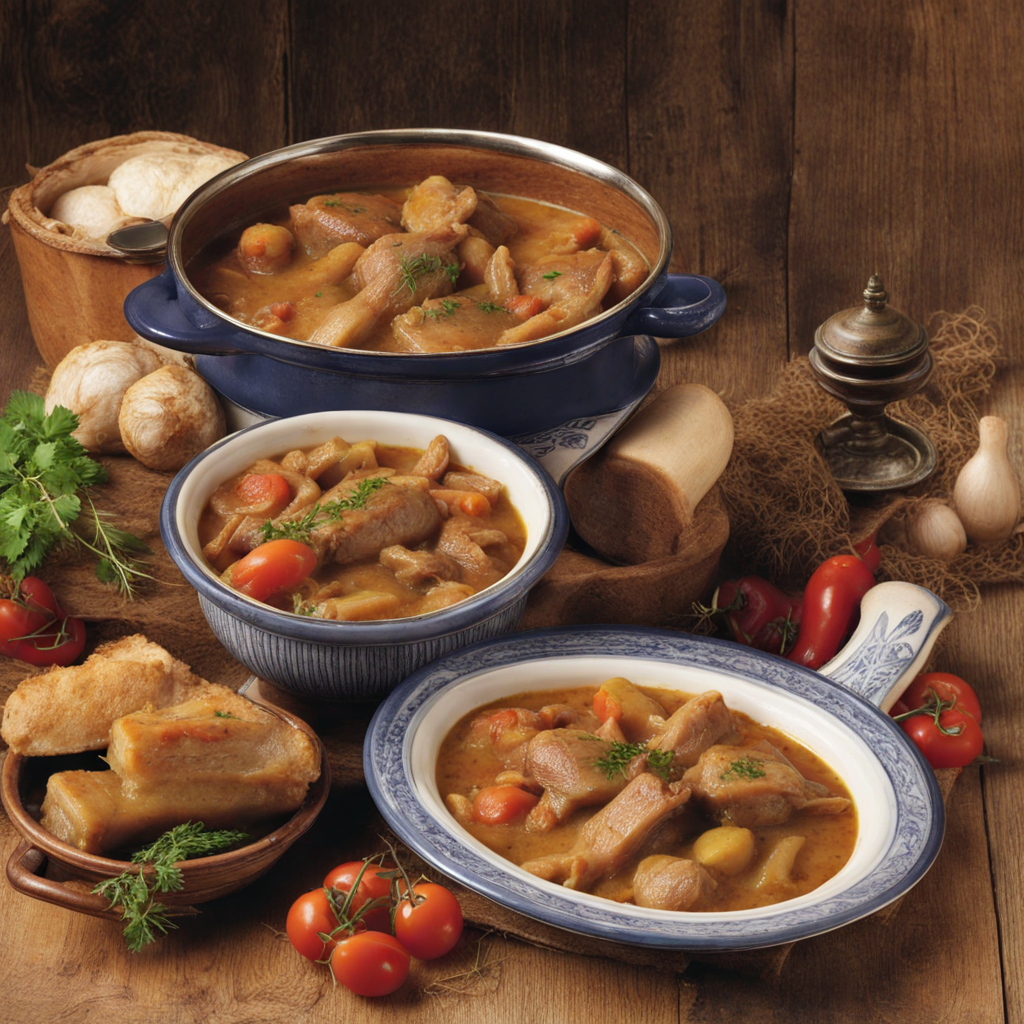Currywurst
Currywurst is a beloved German street food that offers a unique combination of flavors and textures, making it a must-try for any food enthusiast. At its core, currywurst consists of a steamed and then fried pork sausage, typically served in bite-sized pieces. The sausage is generously smothered in a tangy and slightly sweet curry ketchup, which is a distinct blend of ketchup, curry powder, and other spices, creating a flavorful sauce that elevates the dish. The combination of the juicy sausage and the zesty sauce results in a delightful explosion of taste with every bite. Traditionally, currywurst is enjoyed with a side of crispy fries or a bread roll, providing the perfect accompaniment to soak up the delicious sauce. The dish is often garnished with additional curry powder sprinkled on top, enhancing its vibrant color and flavor profile. Many food stalls and restaurants across Germany have their unique takes on currywurst, using various types of sausages and adding their special spices, making each experience a little different from the last. The origins of currywurst can be traced back to post-World War II Berlin, where it quickly gained popularity as a quick and satisfying meal for the masses. Today, it stands as a cultural icon, celebrated in festivals and food markets throughout Germany. Whether enjoyed as a late-night snack or a casual lunch, currywurst offers a delicious taste of German culinary tradition that is both hearty and comforting, inviting you to indulge in its rich history and flavors.
How It Became This Dish
The History of Currywurst: A German Culinary Icon #### Origins Currywurst, a beloved street food in Germany, is a dish that consists of a steamed and then fried pork sausage (Bratwurst) cut into slices and served with a tangy curry ketchup, usually accompanied by French fries or bread. The dish's roots can be traced back to the post-World War II era in Berlin, a time marked by scarcity and the need for affordable, quick meals. The invention of currywurst is credited to Herta Heuwer, who, in 1949, was a food vendor in Berlin. According to popular lore, she obtained ketchup and curry powder from British soldiers stationed in the city. Heuwer experimented with these ingredients and created a sauce that she poured over the grilled sausage. The dish quickly gained popularity, and she opened a food stand in Charlottenburg, which became a local sensation. The combination of flavors was revolutionary for the time; the hearty sausage paired with a spicy, tangy sauce provided a comforting and satisfying meal for a population still recovering from the ravages of war. Heuwer eventually patented her sauce in 1951, which contributed to the dish's uniqueness and authenticity. #### Cultural Significance Currywurst is more than just a meal; it is a cultural phenomenon that reflects the social and historical context of post-war Germany. The dish symbolizes resilience and ingenuity, emerging from a period of hardship. It became a staple of the German street food scene, embodying the spirit of the urban experience in cities like Berlin. In the 1950s and 1960s, as West Germany experienced economic growth, currywurst became a popular dish for workers and students, providing a quick and affordable meal. Food stalls proliferated, and currywurst stands became a fixture in urban landscapes. The dish's accessibility made it a beloved option across various demographics, from blue-collar workers to tourists. Currywurst also reflects the multicultural influences that have shaped modern Germany. The incorporation of curry powder—a spice from colonial India—into German cuisine highlights the complexities of cultural exchange and adaptation. As Germany became increasingly multicultural, currywurst evolved, with various regional and personal interpretations emerging. #### Development Over Time Since its inception, currywurst has undergone various transformations. The original recipe by Herta Heuwer has inspired countless variations, each with its unique twist. Some vendors add additional spices, while others experiment with different types of sausages, such as chicken or vegetarian options, to cater to evolving tastes and dietary preferences. The dish has also seen a rise in gourmet interpretations. In recent years, food culture in Germany, particularly in urban areas, has embraced artisanal and gourmet versions of traditional street foods. Chefs began to experiment with high-quality sausages, homemade sauces, and innovative toppings, elevating currywurst from a simple street food to a culinary experience. Some upscale eateries even offer currywurst paired with craft beers or artisan breads, showcasing the dish's versatility and appeal. Moreover, currywurst has become a symbol of national identity. In 2013, the German government recognized currywurst as a cultural asset, declaring it an "immaterial cultural heritage." This affirmation not only highlights its significance within Germany but also places it on the international stage as a dish worthy of preservation and celebration. Currywurst's popularity has spread beyond Germany's borders, reaching international food festivals and restaurants worldwide, where it is often featured as an exotic and delicious representation of German cuisine. In cities with significant German communities, such as Chicago and New York, currywurst stands and food trucks have emerged, reflecting the dish's global appeal. #### The Impact of Technology and Social Media The rise of social media and technology has further propelled currywurst into the spotlight. Instagram and food blogs have created a new platform for food enthusiasts to share their love for currywurst, leading to a resurgence of interest in this classic dish. Creative plating, unique flavor combinations, and visually appealing presentations have made currywurst a favorite subject for food photography, contributing to its modern-day popularity. In addition, the convenience of food delivery apps has made currywurst more accessible than ever. Vendors and restaurants have adapted to the changing landscape, offering delivery options that cater to a busy, mobile lifestyle. The fusion of traditional street food with modern dining trends illustrates the adaptability of currywurst, ensuring its continued relevance in contemporary food culture. #### Conclusion Currywurst's journey from a humble street food to a cultural icon encapsulates the story of post-war Germany—resilience, creativity, and the blending of influences. It is a dish that resonates with the German populace, transcending social classes and appealing to diverse tastes. As currywurst continues to evolve, it remains a testament to the power of food as a cultural touchstone, bridging past and present, tradition and innovation. Whether enjoyed at a bustling food stall in Berlin or recreated in kitchens around the globe, currywurst stands as a delicious reminder of Germany’s rich culinary heritage and its capacity to adapt and thrive in an ever-changing world. In modern German society, currywurst is more than just food; it's a nostalgic reminder of simpler times, a celebration of cultural fusion, and a beloved dish that continues to capture the hearts and taste buds of many.
You may like
Discover local flavors from Germany







